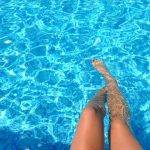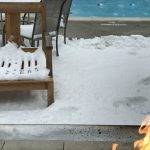The snow is falling and the stars are bright. You’ve got the urge to take a quick dip in the pool after a hard days work, but it hits you that the pool is a block of ice. What do you do? For many, a hot tub is the perfect answer to those Wintertime blues. As we get ready for another Hot Tub season, it might be as good a time as any right now to re-familiarize yourself with the basics of hot tub maintenance. Everything from hot tub chemicals to daily maintenance will be discussed in details.
Ok so let’s get a couple things out of the way first. When you read about hot tubs, you will always come across an article here and there referring to your hot tub as a portable spa, or a spa pool, or even just spa. For sure, you will meet someone or read about your hot tub being called a “Jacuzzi”, but that just a specific brand name and not what the hot tub is actually called.
It doesn’t matter what you call your hot tub, by its brand name or a generic name, it is most important that you know your make and model of your hot tub. This information is all you need on hand to get the service and support you will need for parts etc. down the road.
It’s also smart to have some hot tub vital stats on hand as well when talking to a pro. These stats would include maximum water capacity, its age, and any special water challenges you may have (thinking hard water issues here for example).
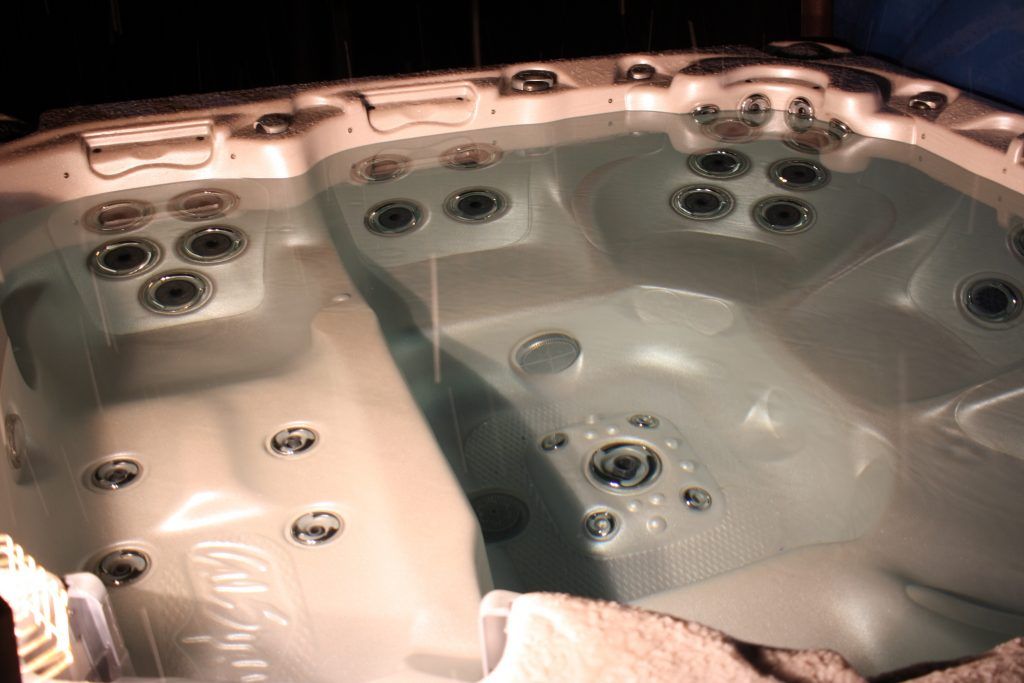
Basic hot tub maintenance
For starters, do NOT think of your Hot Tub as a teeny tiny pool. While hot tub chemicals do react the same as in a pool, dealing with a hot tub is totally different. Just keep thinking, it doesn’t have a diving board, or the alligator floater like the pool, so it’s not a pool. It does however require the same basic care. Water circulation, hot tub cleaning and monitoring the chemistry, all work in harmony as a key part of Hot Tub Maintenance.
Keeping it real means keeping it clean
A few basic items goes a LONG way in hot tub maintenance.
Whether you’ve got an indoor or outdoor hot tub, it is prone to developing scum. If it’s outdoors, you will also need to keep an eye out for leaves, twigs, wind-blown trash and maybe even a stray critter. Ensure you are keeping the waterline and seats clear for a clean spa and to avoid potential water issues.
On a weekly schedule, clean your spa jets and shell using a sponge with some white vinegar on it. This can be used to scrub away the scum line on the edge of the waterline as well.
Ensure you’re cleaning the inside if the hot tub as often as possible and wiping down the shell as well. While you’re in cleaning mode anyway, give your hot tub a quick once over using a 10% bleach solution. This works best to keep mildew at bay.
While weekly cleaning is essential critical hot tub care, plan on draining your spa every three to four months for a thorough cleaning. Best to do it more often though if you’ve got a season of many guests or uses on the go. Think of it like filling up the family bathtub and everyone using it over and over, all the time, icky….just icky.
Tip: Because life happens all the time, it’s probably best to set a timer when re-filling the hot tub after you’ve cleaned it. This will avoid those messy overflow stories you would need to awkwardly explain later.
Hot Tub Maintenance: Chemistry is Cool
Water chemistry isn’t a difficult thing to grasp. Knowledge of a few basic hot tub chemicals and how they react will go a long ways. Fortuntly many of the chemicals used in a hot tub also are used in pools. You can learn more about how those react in this article. All you want to know is how the hot tub is affected by three elements: pH, stabilizer levels and the sanitizer levels.
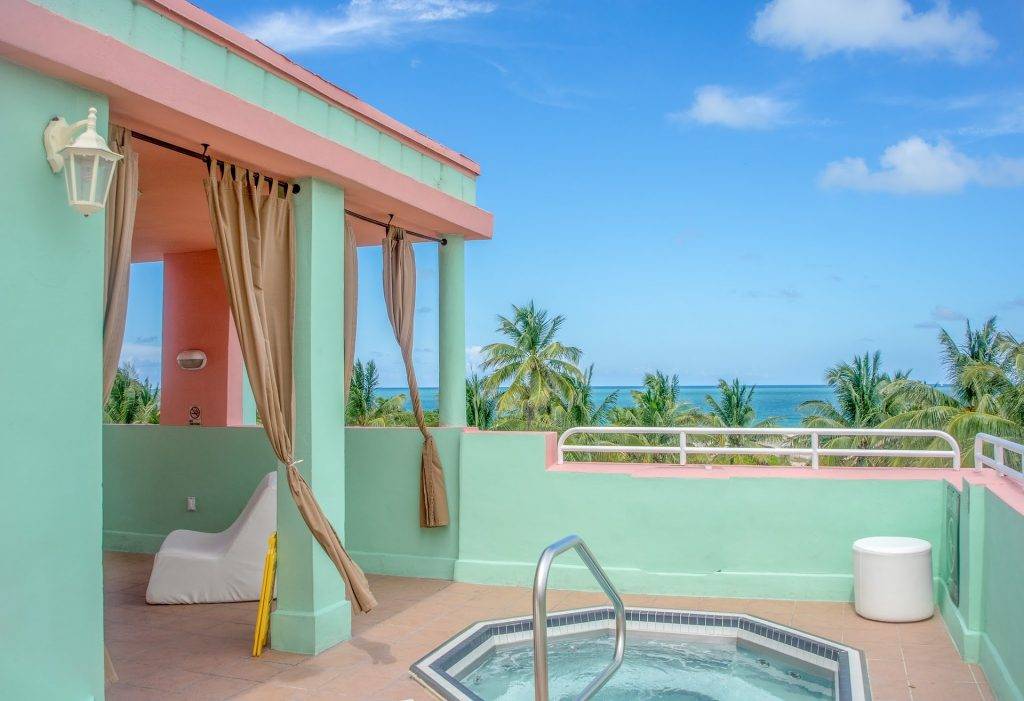
Ok so before putting any chemicals in the hot tub, you have to start with some sort of a baseline to get your initial water chemistry reading set up. Test your water once it’s full to determine the pH and alkalinity levels.
Sanitizer: Chlorine of some type will be your primary method of sanitizing the water. You will want to follow the FC/CYA ratio still, but you’ll be using a mixture of both granular chlorine and liquid chlorine to clean your pool.
In hot tub maintenance granular chlorine, mainly Dichlor can be beneficial. Use of Dichlor in a hot tub is a common practice, as long as the user pays special attention to their Cyanuric Acid (CYA) level. Once the user hit’s their target CYA level they then commonly switch to liquid chlorine. This practice is commonly known as the “Dichlor to Bleach” method.
Using this method the user will use Dichlor for the first few days. Using Dichlor to sanitize the Hot Tub will also increase your CYA level. For the first few days the user will test their Free Chlorine (FC) level and add enough to reach a total of 6 parts per million (ppm). As an example, if a user tests their water and they have 3ppm Free Chlorine, they will need to add another 3ppm Free Chlorine to their water. PoolMath can help you with this.
As the user is adding the Dichlor they’ll also want to keep detailed notes as exactly how much their adding. Once the user adds enough Dichlor to reach 30ppm Cyanuric Acid, the user should switch to liquid chlorine. From there the user should continue to test FC daily and add enough liquid chlorine to maintain their Free Chlorine level between 2-6 parts per million. Maintaining this Free Chlorine/Cyanuric Acid ratio is a key in hot tub maintenance.
Combined Chloramines (CC’s): These can spike high when in use. It’s best to check your CC level a few hours after a long soak. If your CC level is above .5ppm then it’s best to increase your Free Chlorine level to 12ppm to help kill anything growing in your pool. You’ll want to hold your FC level at this increase level until your Combined Chloramine level goes below 0.5ppm.
pH: The goal here is to get it between 7.2 to 7.8. If it falls below this range, that water will be too acidic. It will eat away at the hardware of the hot tub and irritate your skin and eyes. On the other hand, once you go above 7.8 you start to run into the risk of developing scale on your equipment, mainly your heat exchangers.
Total Alkalinity: Keep it between 50 parts per million (ppm) and 90 ppm. You may see a bunch of scaling and cloudiness as well if it gets too high here.
Calcium Hardness: Calcium is important in a Hot Tub to help reduce the chance of foaming. Keep your Calcium Hardness level above 100ppm. In addition to foaming there are reports of some parts used in Hot Tub Pumps that contain ceramic and could be damaged by a low Calcium Level.
For more info on maintaining your water, please revisit the ABC’s of Pool Water Chemistry.
Testing
Test often. Test results will dictate what steps are needed for your hot tub maintenance. Much like your pool, the use of a drop based test kit is vital. Add your hot tub chemicals accordingly to keep you water chemistry levels in check.
Tip: Always a good thing to keep various hot tub chemicals handy so you can tweak your water anytime as needed:
- pH decreaser such as Muriatic Acid. Often the pH increases in a Hot Tub due to the aeration
- Sanitizer (chlorine or bromine etc.) will be used often and is the key to keeping your Hot Tub clean.
- Hot Tub Shock such as Dichlor can be helpful in a Hot Tub, especially on fresh fills. Use this to increase your CYA levels.
- Liquid Test Kits are what’s needed to guide your chemical additions. Do NOT add chemicals without knowing exactly if they’re needed or not, and a good test kit will guide you.

Water Circulation
Keeping your water circulating keeps it free from any contaminants as it passes through the hot tub’s filter cartridges.
Depending on the model you have, your hot tub may have an automatic circulation schedule ensuring it runs twice daily regardless of use or not. When scheduled, the water will circulate for about 15 to 20 minutes (or longer if set) to ensure all water makes its way through the filters. If your tub doesn’t have an auto-schedule setup, make sure to run it for 15-20 minutes a day to ensure proper water refreshment. Don’t worry about putting the cartridge filters to work. The more its run, the cleaner the spa will be.
Tip #1: You can add a bit of cleansing power to your routine by adding some tennis balls into your spa after using it. Because hot water extracts oils, soap and lotion from your body and clothing, the filters may not be able to remove them all completely. By using the tennis balls with the fluffiest of fibers on them, the balls will soak up them up and help keep your water clean.
Tip #2: The ‘when’ part of when you’re soaking matters in this case. If saving money is a thing, try soaking off-peak hours. Your spa is running while you are in it and you’ll be paying less during that time you are in the soak. Odds are high as well that any hot tub squatters wouldn’t be hanging around your backyard during that time, waiting for an invite either!
Filters, Filters, Filters
They are waiting, they are loyal, and they will do your cleanliness bidding as long as you take care of them by doing three things: rinsing, spraying and soaking them.
Rinsing: Do this as often as possible with warm water or using your outdoor hose. Do it more often if you’ve been using the tub more than normal.
Spraying: Do this every week or so as well using a hot tub filter cleaner to get a deep clean going. Remember to rinse them after as well.
Soaking: Every time you drain and refill the hot tub, soak the filters in a chemical cleaner. By taking certain actions, you can help extend the life of your filters and loosen small particulates that get stuck.
When you begin to see that even with a chemical soak, the filters just don’t get clean again, its most likely time to replace them. This is a good time to grab your vital stats notes to bring to your supplier before heading out.
Creating a hot tub maintenance schedule
By keeping to your schedule of maintenance (more on that below), you will do your best to ensure your soaks and that of your family and friends are spent with fun and laughter!
Just like your car or house need maintenance, your hot tub will as well, though not nearly as much. Whether you choose to use an app, a calendar or even a whiteboard, there are some basics here that we can lay out in a sample maintenance schedule to help you start out.
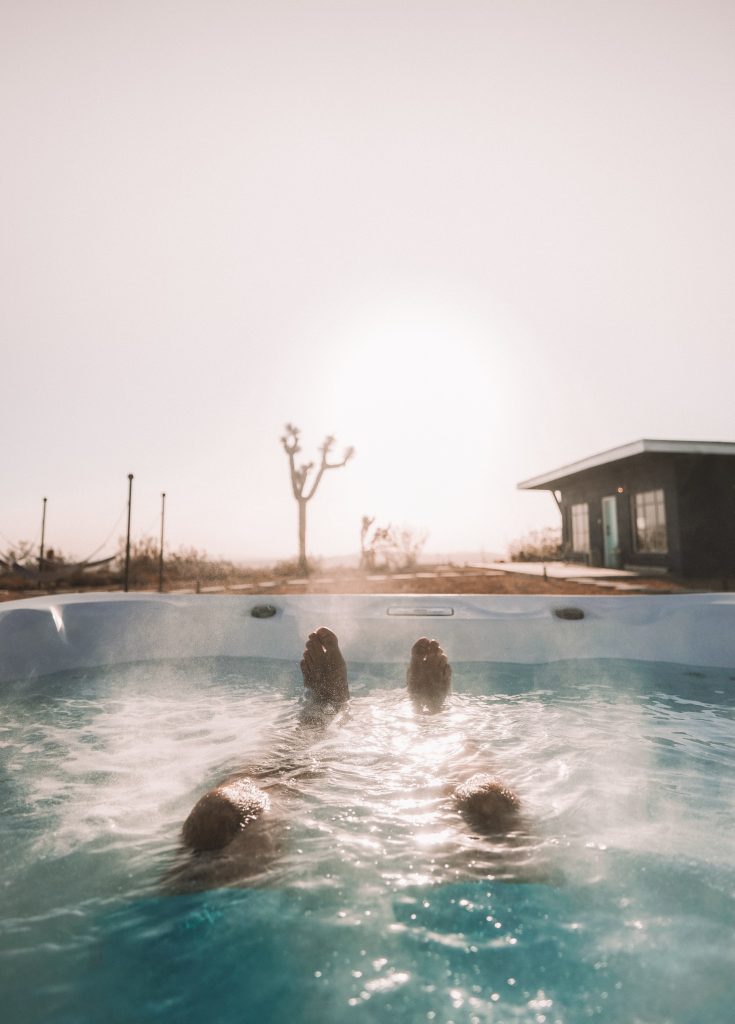
Daily Maintenance
- Make sure the hot tub cover is securely set and is clean. It’s important to keep the critters and junk out while keeping the chemicals, heat and water in.
- Check the water temp and adjust as needed. If you start to see drastic temp fluctuations, you may have system issues you will need to address asap.
- Check for any damage to the cover or hot tub, especially if outdoors due to animals or elements.
- Check sanitizer and pH levels.
Quarterly Maintenance
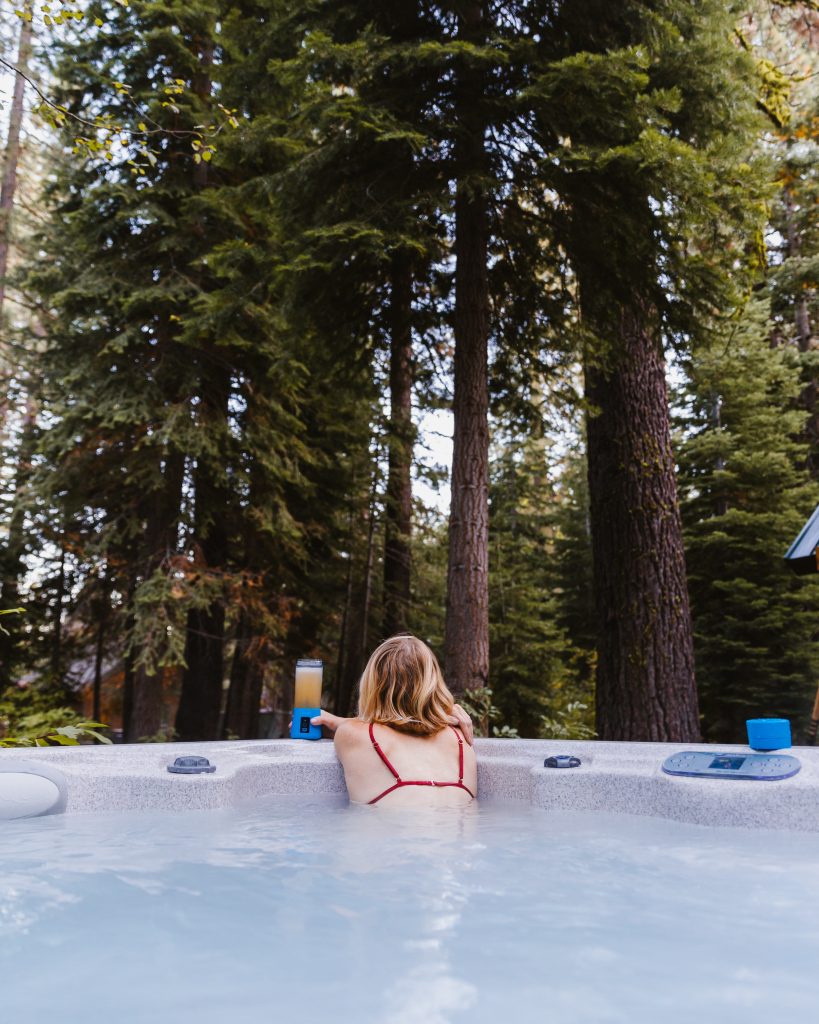
So, do this once every three or four months depending on how much use you’ve gotten from your hot tub. Schedule this as a drain and refill day that works with most of the other tasks to be checked.
- Check your portable spa cabinet. A nice cleaning and ‘refreshing’ of the enclosure is great for new cosmetic or structural changes and repairs.
- Time to do a chemical soak of the filter. This is the deep clean soak version.
- Drain, clean and repair time. This is the best time to do any repairs to the hot tub itself.
Annual maintenance
While it’s preferable to do them more often, you should complete the suggestions below at least once a year. Flush the lines. This will remove bacteria and biofilm. You should do this when you perform your scheduled drain and refill anyway. To do this we suggest also using a product specially designed to clean hot tubs of biofilm.
Inspect the hardware and electrical wiring. Look for tears, damage etc.
Call in a pro for a tune-up. The pro will do a full once over to check if anything stands out as an issue or potential issue.
Inspect the cover. Look for damage over time, moisture absorption, mold, bugs etc. Chemicals used in your hot tub can include
Revise, and update your maintenance schedule as needed. Keep notes on all tasks throughout the year and record any notable outcomes.
Hot tub rash
The importance of keeping your chemical levels is key to avoiding skin damage. When left unchecked for an extended period of time, you or your guests will run the risk of contracting hot tub folliculitis, or more commonly referred to as hot tub rash. Most commonly, the lower parts of the body that submerge in water develop this treatable skin irritation. This rash will show up as red and bumpy and itchy. It may resemble acne. This condition is not contagious, but you will need to treat it with the following methods (a doctor’s visit is always recommended).
- Warm compresses to reduce itching and improve healing
- Anti-itching creams or lotions may be used (to relieve discomfort)
- Anti-bacterial creams can be used to prevent any chance of a secondary infection
- Applying apple cider vinegar to the affected area. You can apply this directly or soak in a bath containing apple cider vinegar.
Final thoughts
Basic hot tub maintenance will definitely go a long way in saving huge repair or damage costs down the road. With some forethought and consistent regular care, you will see that keeping your spa running perfectly is much easier over time. The end result of course, is your opportunity to spend your time whenever you wish, soaking and relaxing in your hot tub.


